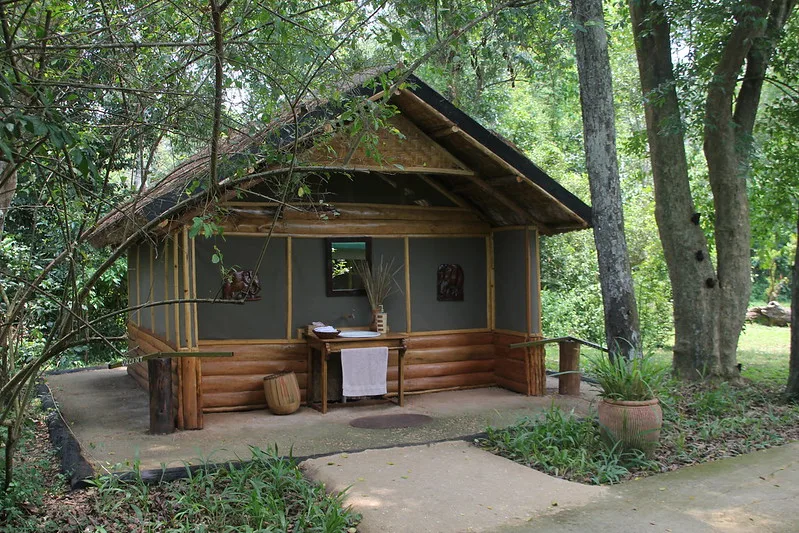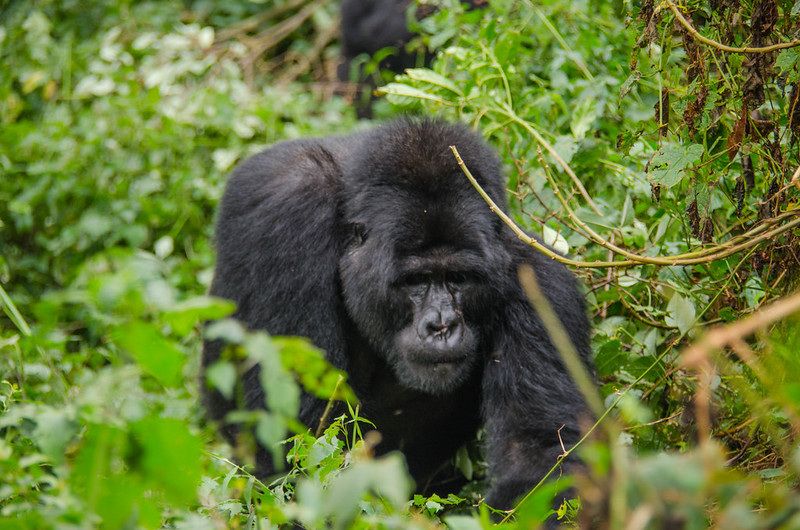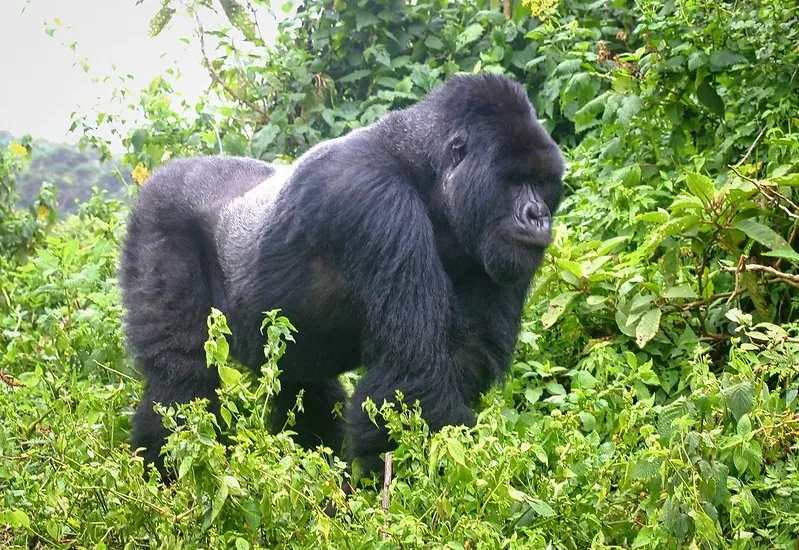Vous êtes bienvenus, aventuriers courageux, dans les merveilles sauvages de l'Ouganda, où l'appel de la…
The indefinable-prehistorical shoebill stork
Shoebill stork safaris Uganda
This is the most wanted, distinctive bird species by several tourists who fancy bird watching in the pearl of Africa. It is evident that Uganda is recognized as the top terminus with exclusive birds in different tourist attractions. Much as you prepare to experience and relish the Uganda primate safaris involving Gorillas and chimpanzees plus possibly wildlife, bird viewing is another thus far big center of repulsion due to the fact that it is a dweller of the most wanted bird species in Africa, and that is the Shoe-bill stork. Due to its exclusiveness and infrequency nature as it corsets in specific places in the wetlands plus swamp areas especially around the Eastern parts of Africa, well that’s the main reason as to why it is highly wanted / sought after. Not only in Uganda but this bird species is also sighted in about 6 other countries like South western Ethiopia, Malawi, Kenya, Northern Cameroon, Central African Republic, Botswana, etc.
![]() Some of the exclusive and exciting features noticed about this bird species-Shoe bill stork, which makes it so stunning to be spotted while in Uganda on your safari, are, it has gotten a remarkable prehistorical look with a vast shoe like shaped dirty yellow bill that looks like an aged worn shoe thence the name shoe-bill. This bird does normally stand at about 150 cm tall & weighs up to approximately 14 pounds. Being an exciting bird the Arabs named it “Abu Maruk” which basically implies “father of the shoe”.Shoe-bill stork is nonexistent with about 1000 of them nigh in Uganda thus they are highly threatened / imperil. This is so because they are normally terminated by fishermen who consider them awful augury.
Some of the exclusive and exciting features noticed about this bird species-Shoe bill stork, which makes it so stunning to be spotted while in Uganda on your safari, are, it has gotten a remarkable prehistorical look with a vast shoe like shaped dirty yellow bill that looks like an aged worn shoe thence the name shoe-bill. This bird does normally stand at about 150 cm tall & weighs up to approximately 14 pounds. Being an exciting bird the Arabs named it “Abu Maruk” which basically implies “father of the shoe”.Shoe-bill stork is nonexistent with about 1000 of them nigh in Uganda thus they are highly threatened / imperil. This is so because they are normally terminated by fishermen who consider them awful augury.
This bird does have a life span of about 50 years, unaccompanied/solitary bird and only has gotten exceptional connect. It contains a breeding period between the months of April & June. Both the male & female that actually brand the parents line sort the nest on the solid ground where the female bird lays 2 eggs & during incubation period, both the parent birds take part for about 1 month when the eggs hatch, and then here the mother bird does feed the 2 chicks for approximately 1 to 2 months probably until they are mature enough to feed themselves /be able to get their own food.
![]() Whale headed stock is another name you can call shoe-bill stork and this bird is only located in water logged places such as lakes, swamps & wetlands therefore they do feed on food found in water like the frogs, lung fish, water snakes, lizards, baby crocodiles, etc. And all this is actually probable due to the actuate bounds of the wide bill & much as they don’t contain a webbed feet, they are able to stealthily haul their prey/quarry in the waters very well.
Whale headed stock is another name you can call shoe-bill stork and this bird is only located in water logged places such as lakes, swamps & wetlands therefore they do feed on food found in water like the frogs, lung fish, water snakes, lizards, baby crocodiles, etc. And all this is actually probable due to the actuate bounds of the wide bill & much as they don’t contain a webbed feet, they are able to stealthily haul their prey/quarry in the waters very well.
What you should know about the Shoe-bill stork in Uganda
- They are soundless birds however they can execute bill banging shows at their nests.
- Shoe-bill stork birds incline to be nocturnal even though they are principally water birds.
- They are less active on the ground but very foppish in the air
- Once they are flying, they have a wide span that enables them fly attractively in the air and their heads & necks recant/retract.
- They pull back their wings when they do attack their quarry & approach it in an exhibit kind of way to display their strength.
- The male shoe-bill stork is heavier compared to the female having a weight of up to 7 kg.
- They are very tolerant hunters & act like statues because they can basically stand in one position for such a long time.
Where to find the Shoe-bill stork in Uganda.
![]() This bird is highly spotted in specific places in Uganda and these involve Mabamba swamp which is noticed as the finest destination to spot shoe-bill stork. This is an isolated swamp positioned on Lake Victoria near Entebbe and can only be reached by using a boat / canoe to it where you will maneuver water ways containing lily pads & papyrus swamp, and also includes other bird species apart from the shoe-bill stork like pallid harrier & blue swallow, papyrus yellow warbler, etc. Other destinations include Murchison falls national park precisely at the delta where the Nile integrates with lake Albert, Lake Mburo national park, Semuliki national park, Ziwa Rhino sanctuary, Lake Kyoga & Ishasha sector in Queen Elizabeth national park via the lake Edward flats, etc.
This bird is highly spotted in specific places in Uganda and these involve Mabamba swamp which is noticed as the finest destination to spot shoe-bill stork. This is an isolated swamp positioned on Lake Victoria near Entebbe and can only be reached by using a boat / canoe to it where you will maneuver water ways containing lily pads & papyrus swamp, and also includes other bird species apart from the shoe-bill stork like pallid harrier & blue swallow, papyrus yellow warbler, etc. Other destinations include Murchison falls national park precisely at the delta where the Nile integrates with lake Albert, Lake Mburo national park, Semuliki national park, Ziwa Rhino sanctuary, Lake Kyoga & Ishasha sector in Queen Elizabeth national park via the lake Edward flats, etc.
When is the best time to spot the shoe-bill stork in Uganda.
This bird is spotted in the morning and evening but even so can be spotted any time of the day. They are best spotted in Mabamba swamp since they infrequently stay in the swamp. During the rainy season(March, April, May, September, October & November),they are hugely populated and can be sighted in several wetlands of the earlier mentioned places. It can also be spotted in the peak season(January, February, March, June, July, August, & December since Uganda seasons do vary.
So then if you are getting ready to embark on a Uganda safari, ensure to involve the lovely bird species known as the Shoe-bill Stork for such an exciting birding venture.


